https://github.com/arafkarsh/ms-quickstart
Microservices QuickStart. Microservice with Redis as Distributed cache and with Kafka Client for async communications along with AOP, Exception, Crypto and Security (JWT) Framework.
https://github.com/arafkarsh/ms-quickstart
jakarta-bean-validation jakarta-ee jakarta-persistence jakarta-servlet jakartaee java-17 java-8 microservices microservices-architecture springboot2-x springboot3
Last synced: 7 months ago
JSON representation
Microservices QuickStart. Microservice with Redis as Distributed cache and with Kafka Client for async communications along with AOP, Exception, Crypto and Security (JWT) Framework.
- Host: GitHub
- URL: https://github.com/arafkarsh/ms-quickstart
- Owner: arafkarsh
- License: apache-2.0
- Created: 2023-05-31T06:37:45.000Z (over 2 years ago)
- Default Branch: main
- Last Pushed: 2023-06-12T03:05:16.000Z (over 2 years ago)
- Last Synced: 2025-01-15T06:54:12.248Z (9 months ago)
- Topics: jakarta-bean-validation, jakarta-ee, jakarta-persistence, jakarta-servlet, jakartaee, java-17, java-8, microservices, microservices-architecture, springboot2-x, springboot3
- Homepage: https://www.arafkarsh.com
- Size: 2.26 MB
- Stars: 2
- Watchers: 2
- Forks: 0
- Open Issues: 0
-
Metadata Files:
- Readme: README.md
- License: LICENSE
Awesome Lists containing this project
README
# Microservice Cache / Kafka Template
Three versions are available for the template
1. v0.5.x = SpringBoot 2.7.2 with Java 8 and Java EE
2. v0.6.x = SpringBoot 3.1.0 with Java 17 and Jakarta EE
3. v0.7.1 = SpringBoot 3.1.0 with WebFlux, R2DBC and Reactive Framework
Checkout the respective branches for the Microservices template
## Microservice Structure
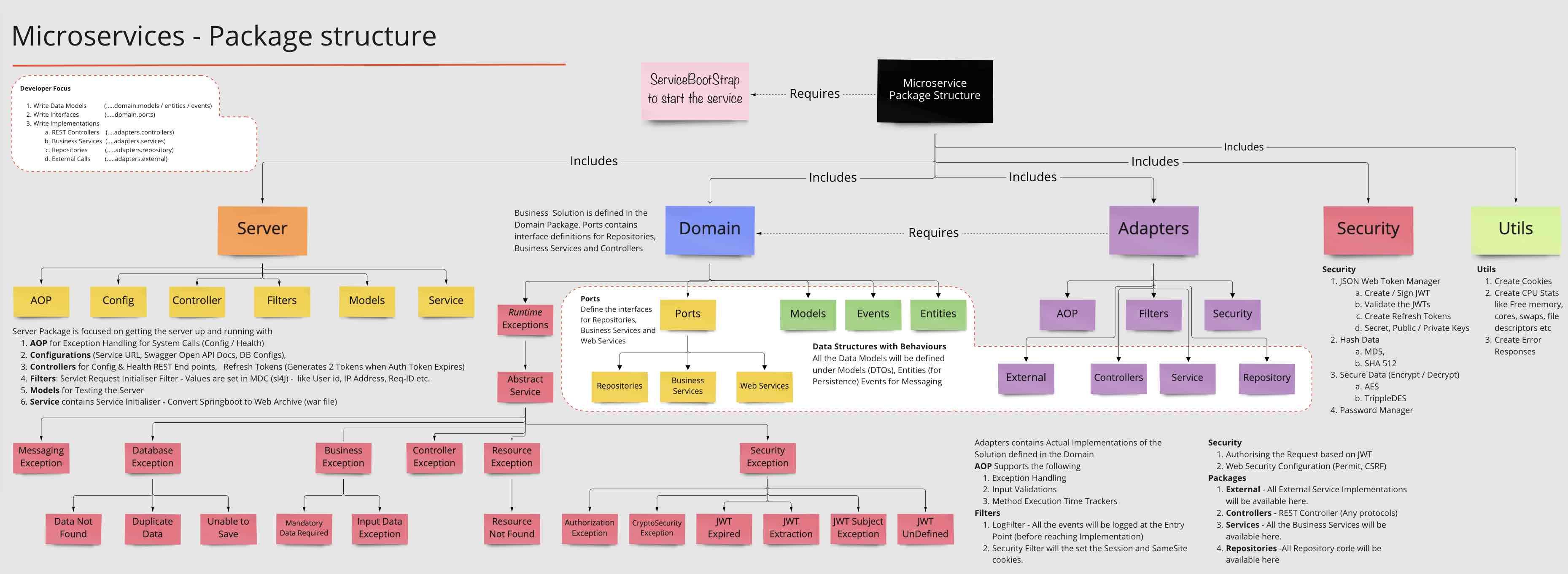
### What the Template Provides out of the box
1. SpringBoot App with Swagger Docs (...adapters.controllers)
2. Exception Handling with Exception Framework using AOP ( ..adapters.aop)
3. Log Management using Logback (...adapters.filters)
4. Standardized REST Responses (...domain.models.StandardResponse)
5. Security using JWT Tokens (...adapters.security)
6. Encrypting Sensitive Data using Encryption Algorithms (...security)
7. JPA configurations for H2 and PostgreSQL (...server.config)
### Pre-Requisites for SpringBoot 2.x
1. SpringBoot 2.7.x
2. Java 8 (Compile) & Java 17 (To run the App)
3. Java EE (javax.servlet.*, javax.persistence.*, javax.validation.*)
### Pre-Requisites for SpringBoot 3.x
1. SpringBoot 3.1
2. Java 17
3. Jakarta EE (jakarta.servlet.*, jakarta.persistence.*, jakarta.validation.*)
Other Prerequisites
1. Maven 3.8.6
2. Git 2.31
### Microservice Cache / Kafka Template gives you a
1. SpringBoot App template with
2. Open API 3 Ex,
3. Spring Actuator,
4. Micrometer and
5. Redis Cache Implementation with
6. H2 In Memory Database
7. POM File with (SpringBoot) Fat and Thin (Maven) jar file creation and
8. Dockerfile for containerisation.
## 1. Setting up the Template
### Step 1.1 - Getting Started
#### 1.1.1 For SpringBoot 2.7.2, Java 8 and Java 17 (to run) and Javax EE
1. git clone https://github.com/arafkarsh/ms-springboot-272-java-8
2. cd ms-springboot-272-java-8
#### 1.1.2 For SpringBoot 3.1.0 Java 17 and Jakarta EE 10
1. git clone https://github.com/arafkarsh/ms-springboot-310-java-17-jakarta-ee-10
2. cd ms-springboot-310-java-17-jakarta-ee-10
### Step 1.2 - Compile (Once your code is ready)
#### 1.2.1 Compile the Code
Run the "compile" from ms-quickstart
1. compile OR ./compile (Runs in Linux and Mac OS)
2. mvn clean; mvn -e package; (All Platforms)
3. Use the IDE Compile options
#### 1.2.2 What the "Compile" Script will do
1. Clean up the target folder
2. Generate the build no. and build date (takes application.properties backup)
3. build final output SpringBoot fat jar and maven thin jar
4. copy the jar files (and dependencies) to src/docker folder
5. copy the application.properties file to current folder and src/docker folder
In Step 1.2.2 application.properties file will be auto generated by the "compile" script. This is a critical step.
Without generated application.properties file the service will NOT be running. There is pre-built application properties file.
### Step 1.3 - Run
#### 1.3.1 Start the Service
1. run OR ./run (Runs in Linux or Mac OS)
2. mvn spring-boot:run (All Platforms)
#### 1.3.2 Test the Service
1. test OR ./test (Runs in Linux or Mac OS)
2. Execute the curl commands directly (from the test script)
#### $ run Result

#### MS Cache Swagger UI Docs for Testing
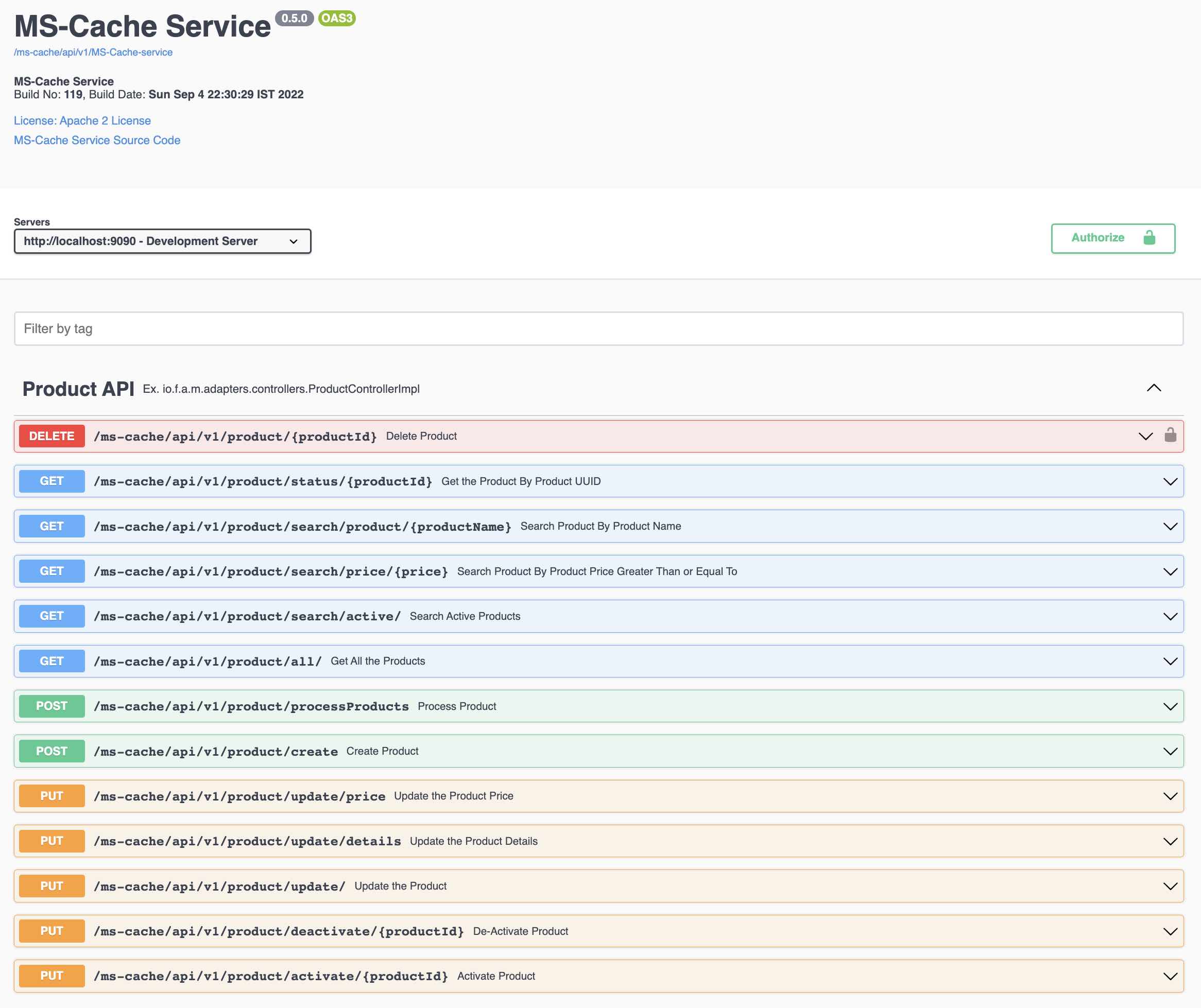
### Step 1.4 - Testing the APIs Using Swagger API Docs or Postman
To test the APIs (in secure mode - you will see a lock icon in the Swagger Docs). These test tokens are generated
based on the flag server.token.test=true in the application.properties file. (Change the app.props.tmpl if you want to
change in the build process.) In the Production environment, this flag should be false. These tokens can be generated only in
an Auth Service. All the services need not generate these tokens unless for the developers to test it out.
In a real world scenario, disable (Comment out the function generateTestToken() from the code java file
ServiceEventListener.java in the package documentation io.fusion.air.microservice.server.service) this feature for
production environment.
#### Step 1.4.1: Copy the Auth Token
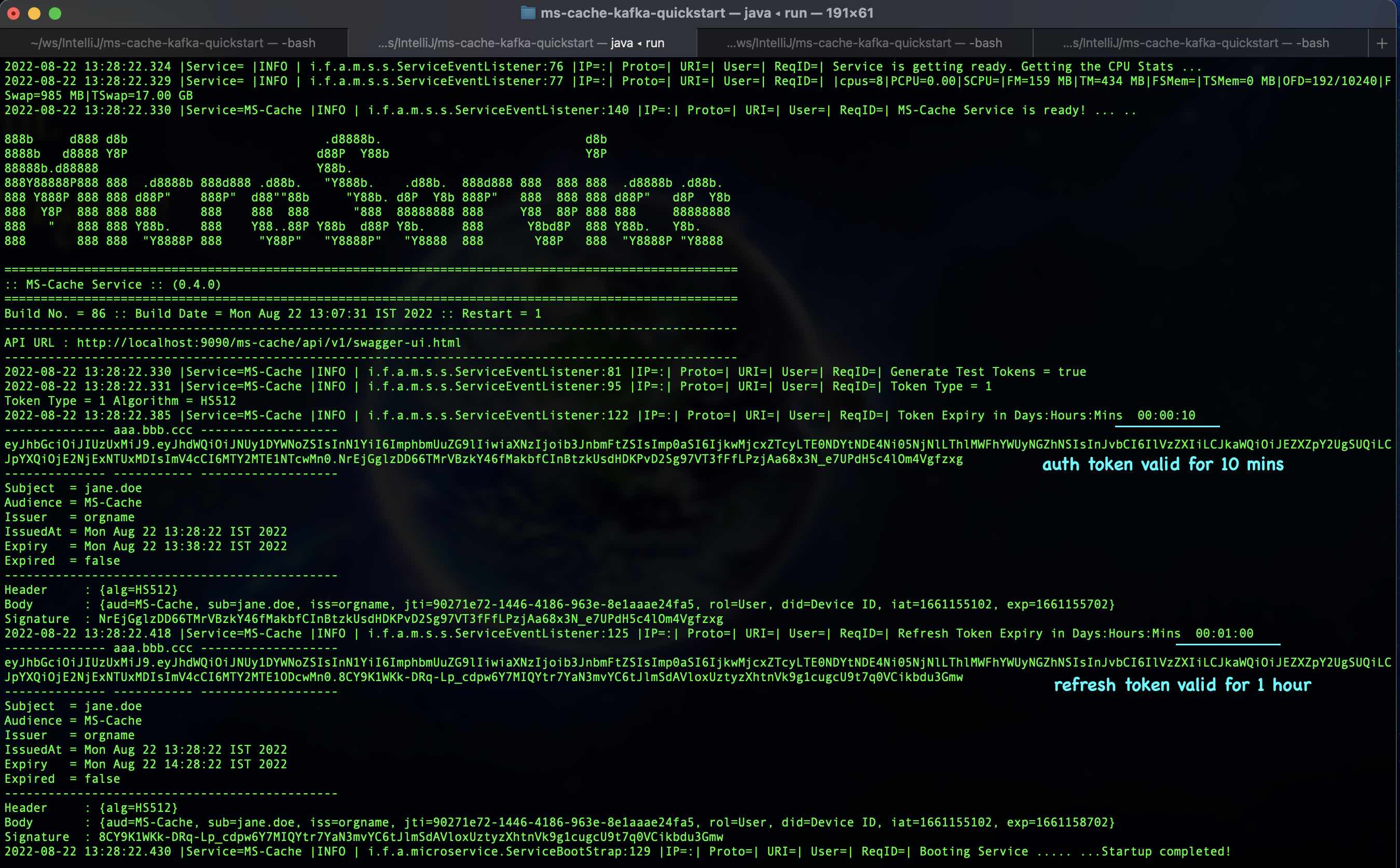
#### Step 1.4.2: Click on the Authorize Button (Top Left the Swagger UI)
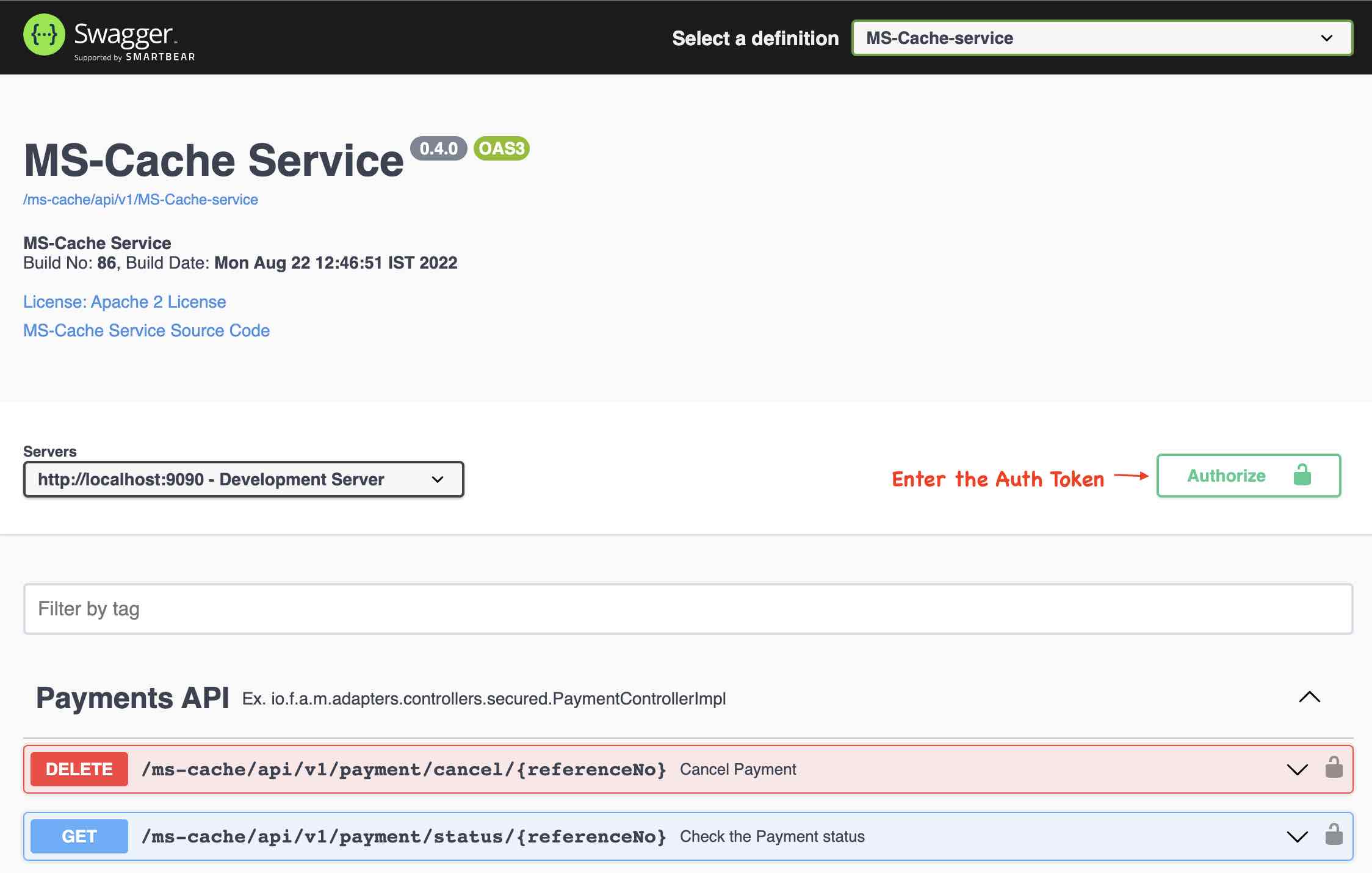
#### Step 1.4.3: Enter the Token and Click Authorize
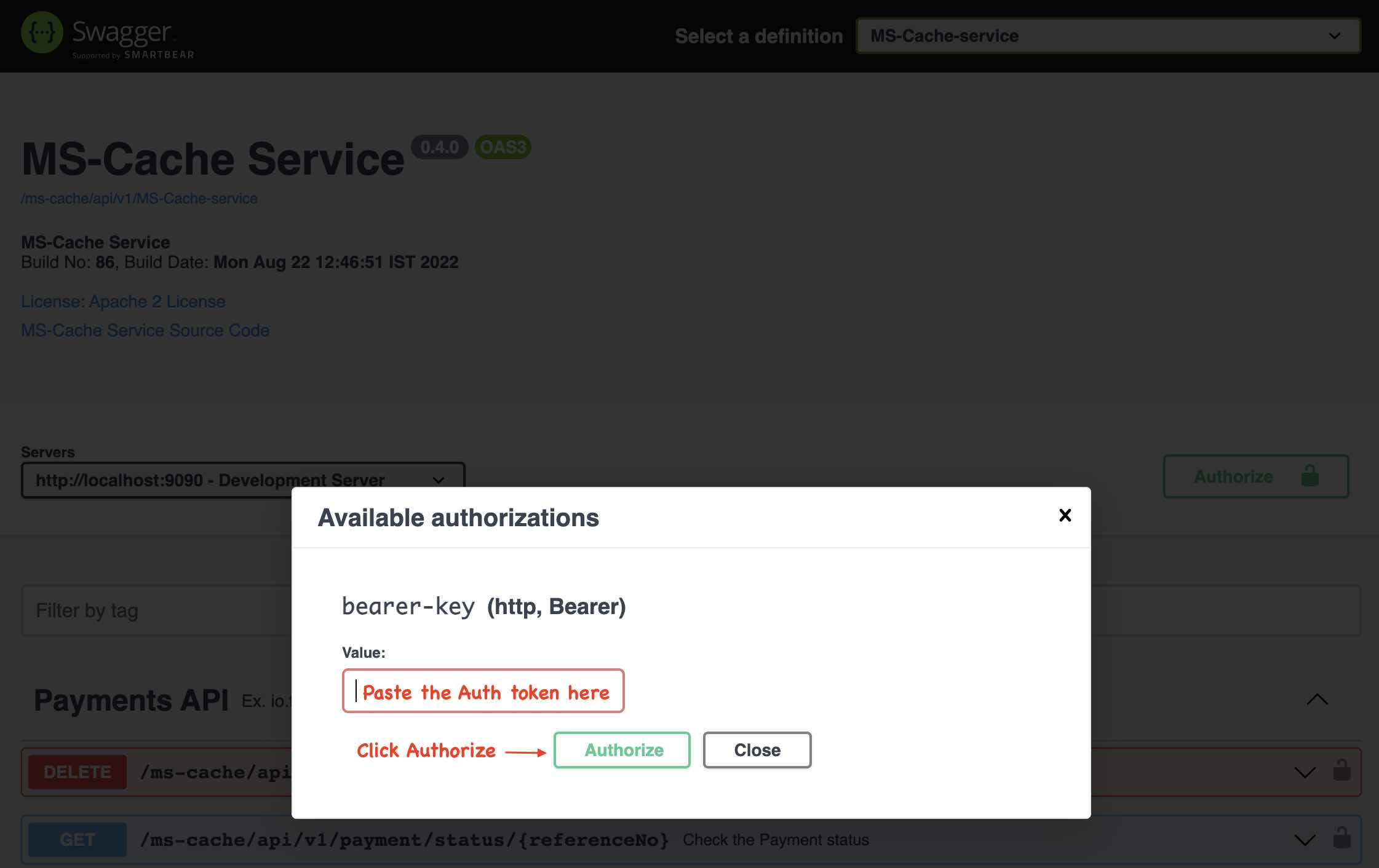
### Step 1.5 - Import Swagger API Docs Into Postman
#### Step 1.5.1: Swagger Open API 3.0 Docs JSON Format
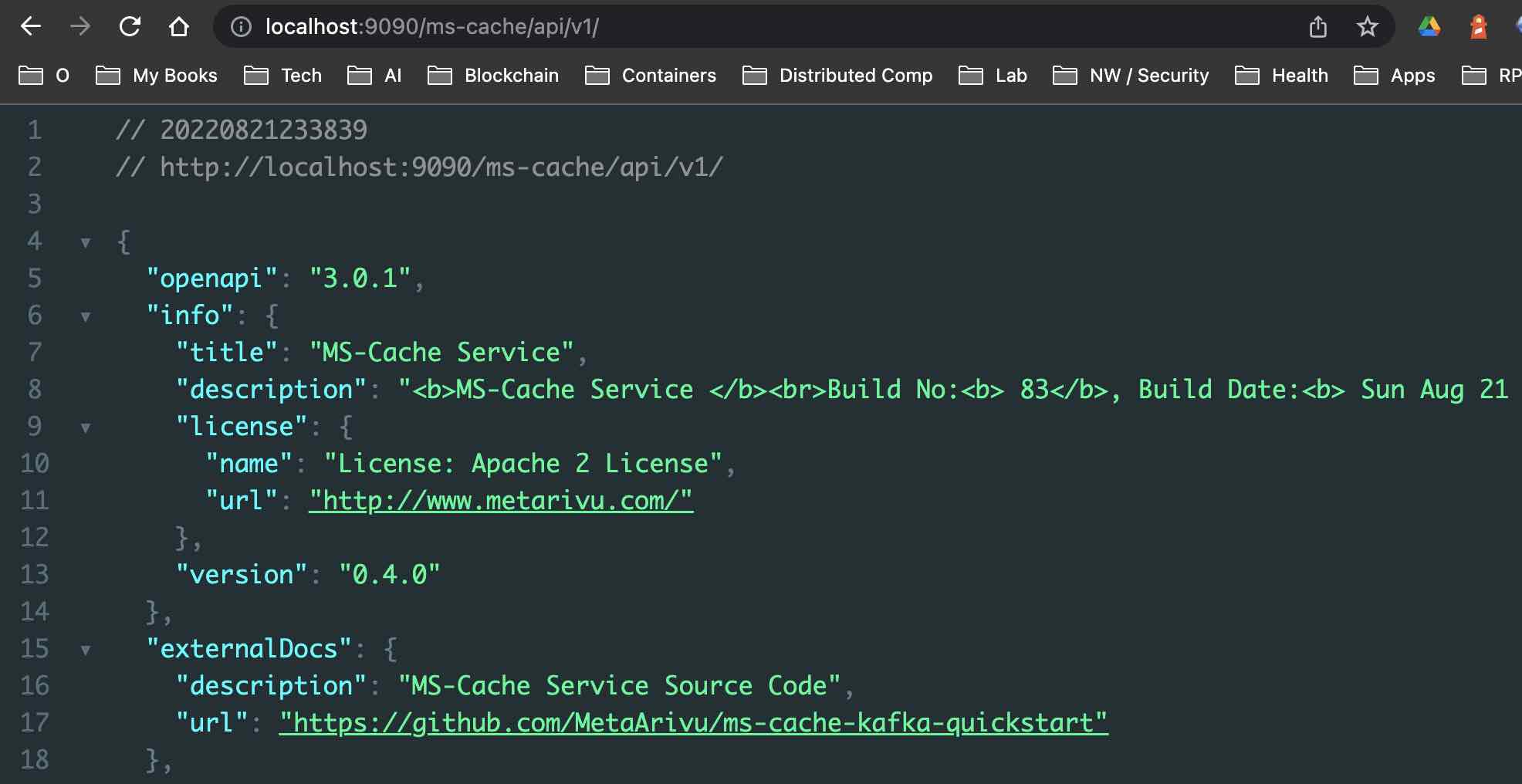
#### Step 1.5.2: Import Into Postman - Set the Link
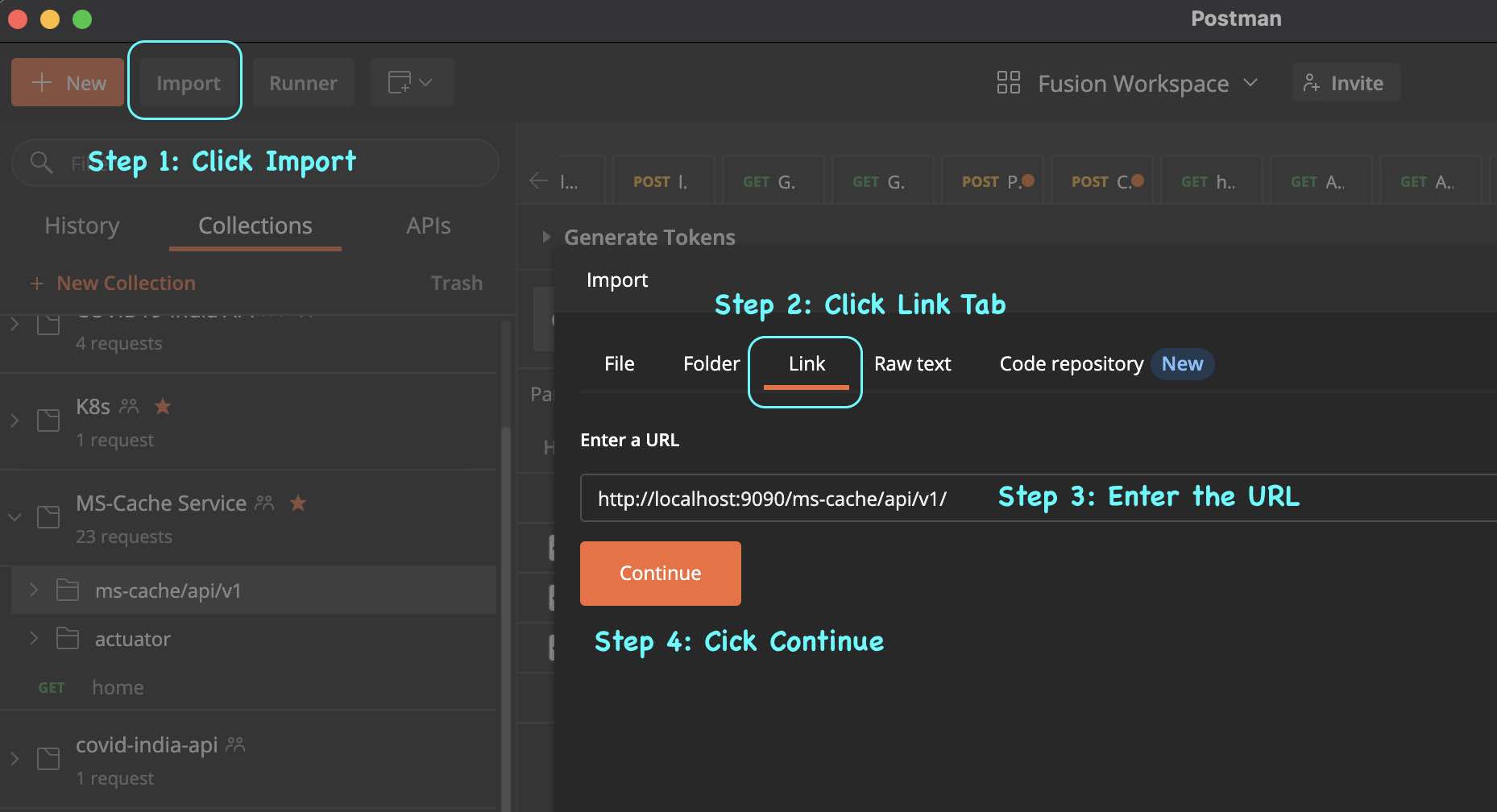
#### Step 1.5.3: Import Into Postman - Confirm
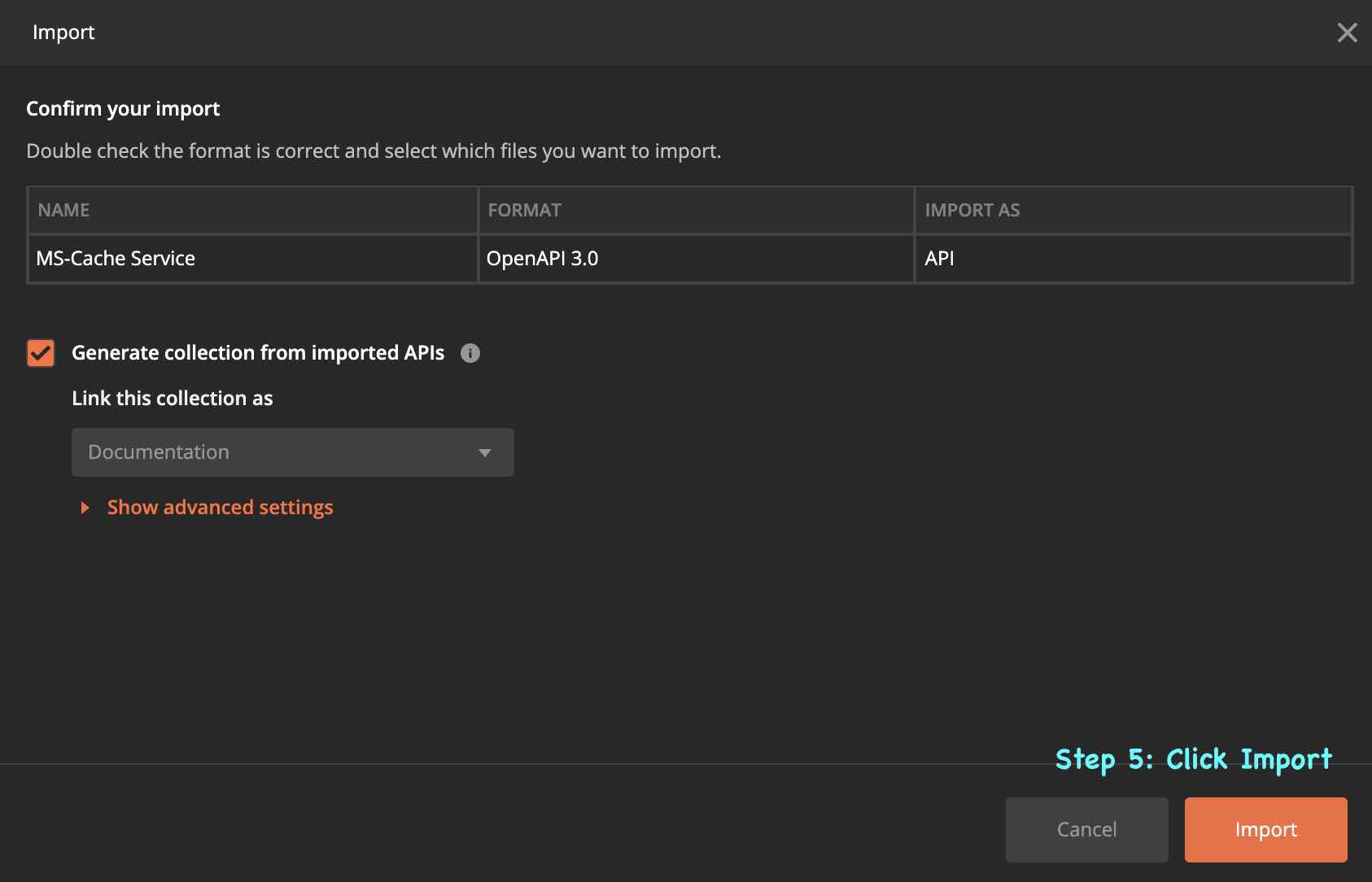
## 2. CRUD Operations Demo & Error Handling
### 2.1 CRUD Operations
#### 2.1.1 GET Query Execution and Fallback Data
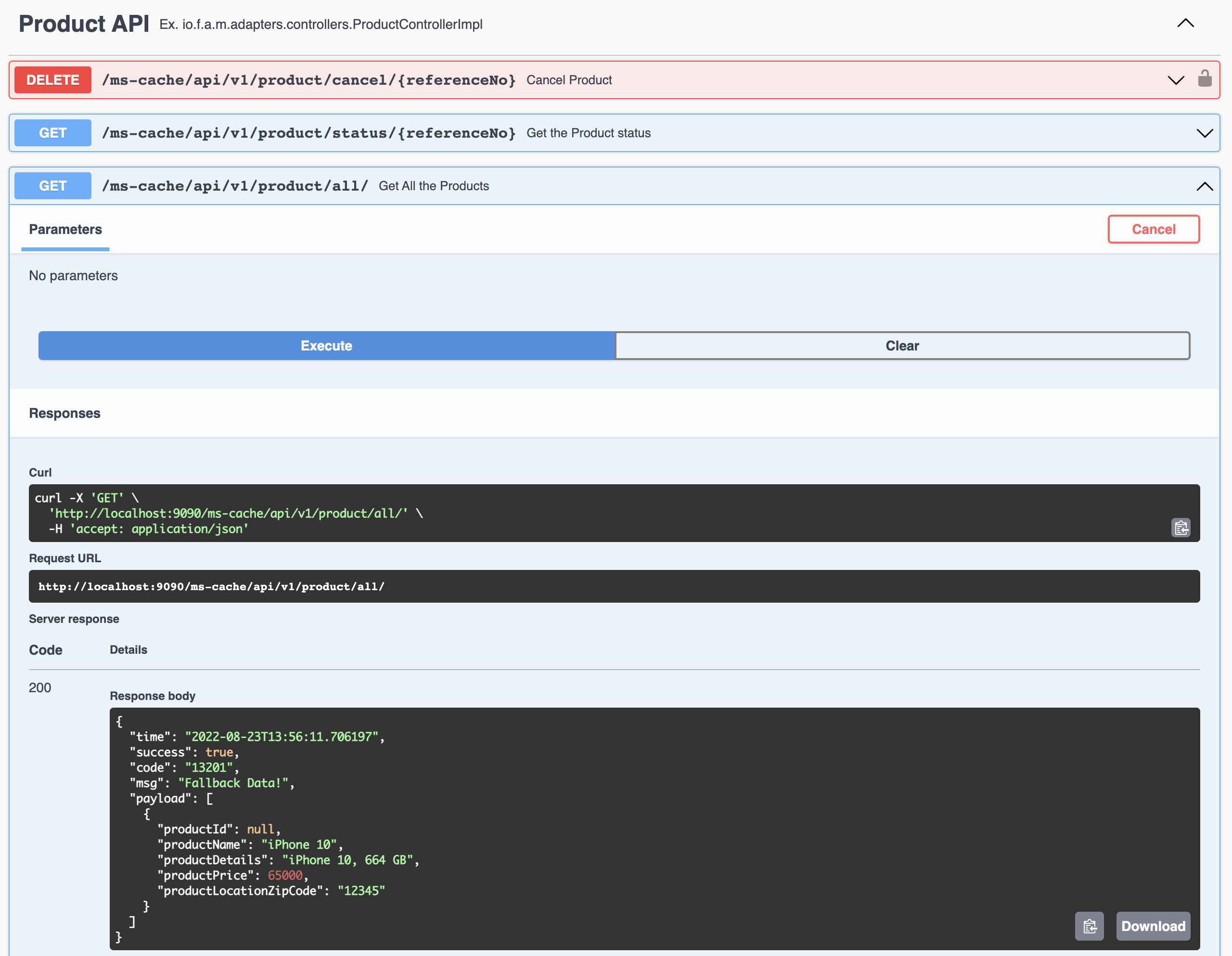
#### 2.1.2 POST Create Data - Product 1

#### 2.1.3 POST Create Data - Product 1 : Result
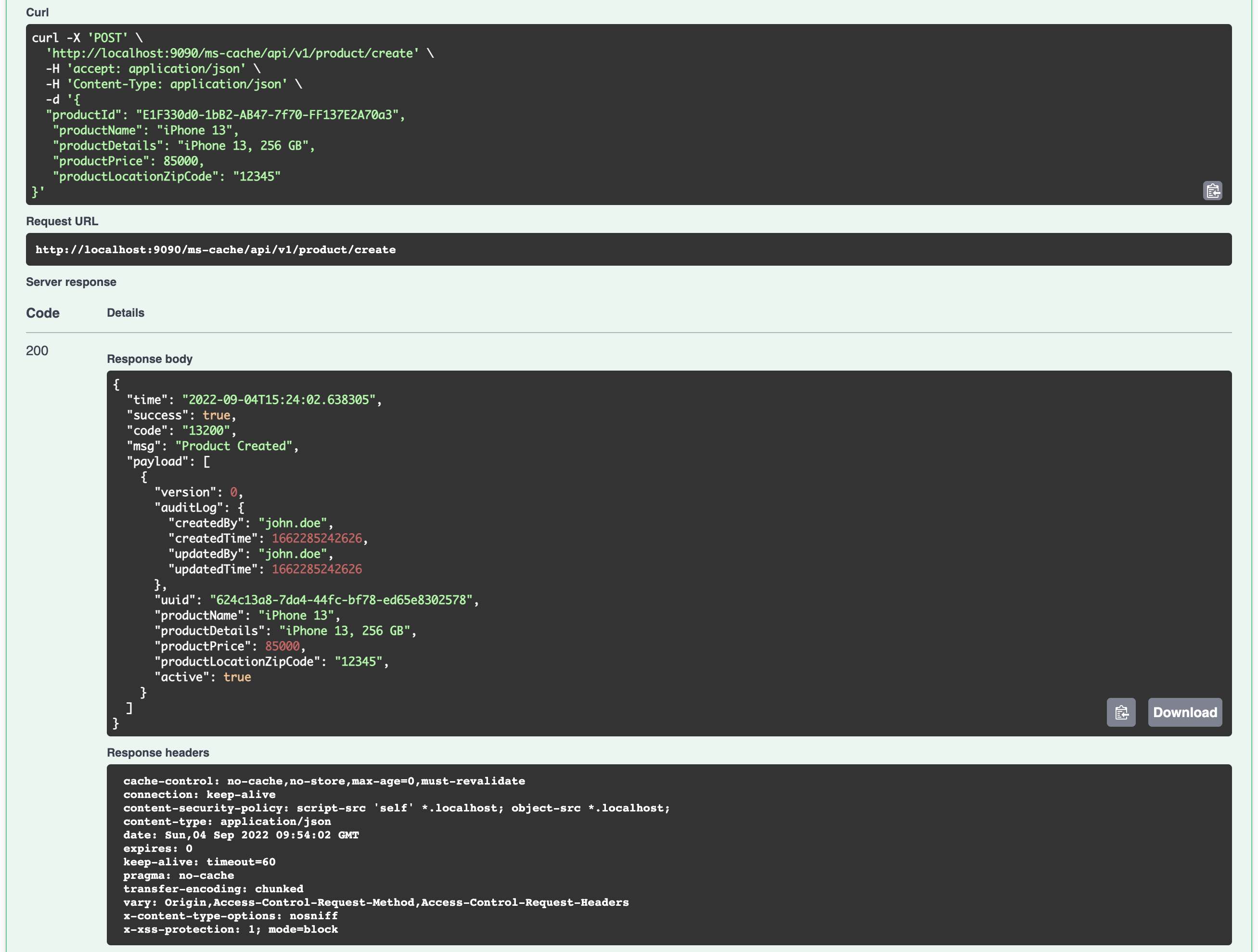
#### 2.1.4 POST Create Data - Product 2

#### 2.1.5 POST Create Data - Product 3

#### 2.1.6 GET All the Data (Created in Steps 2.2 - 2.5)
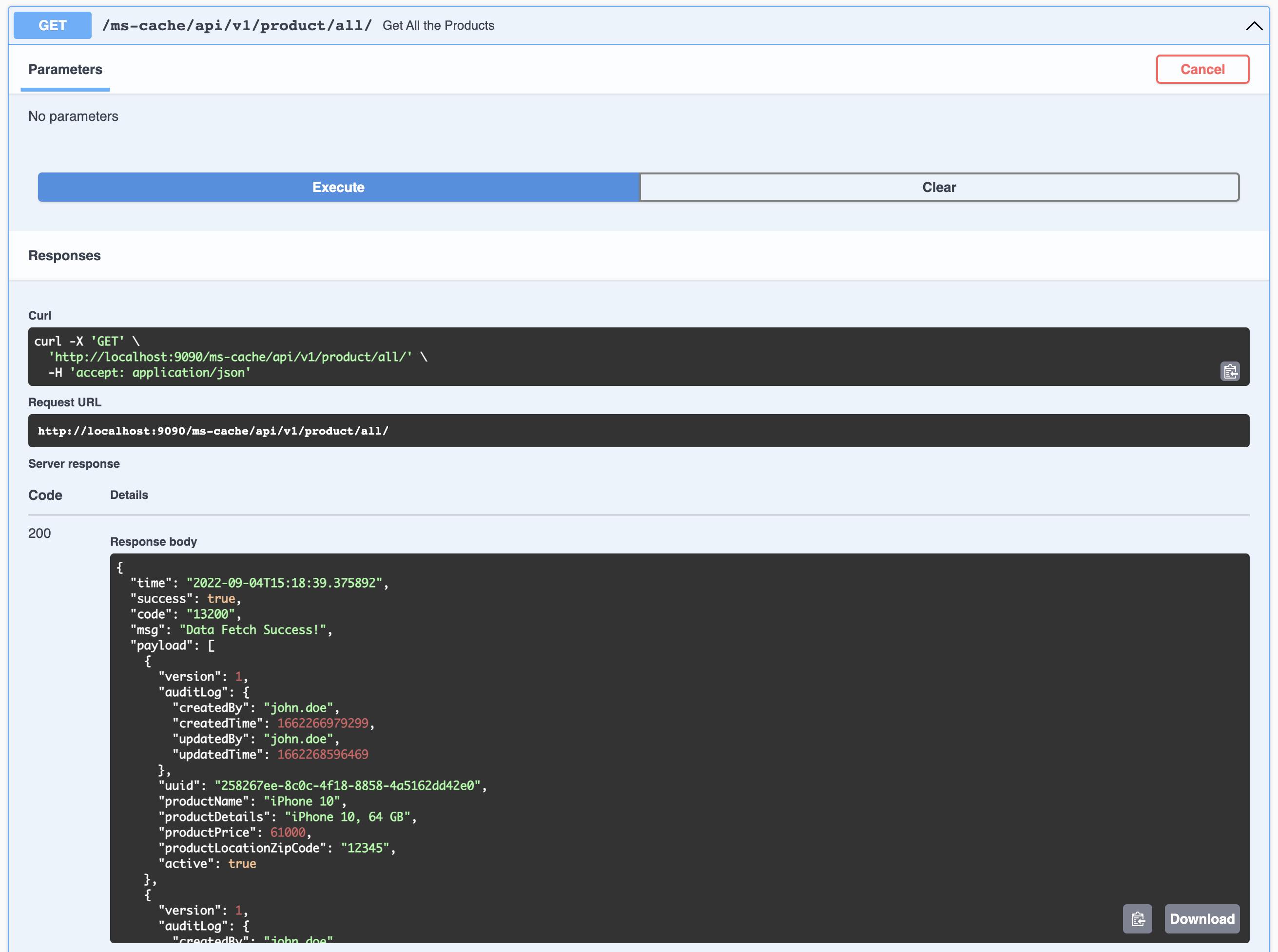
#### 2.1.7 GET Single Record
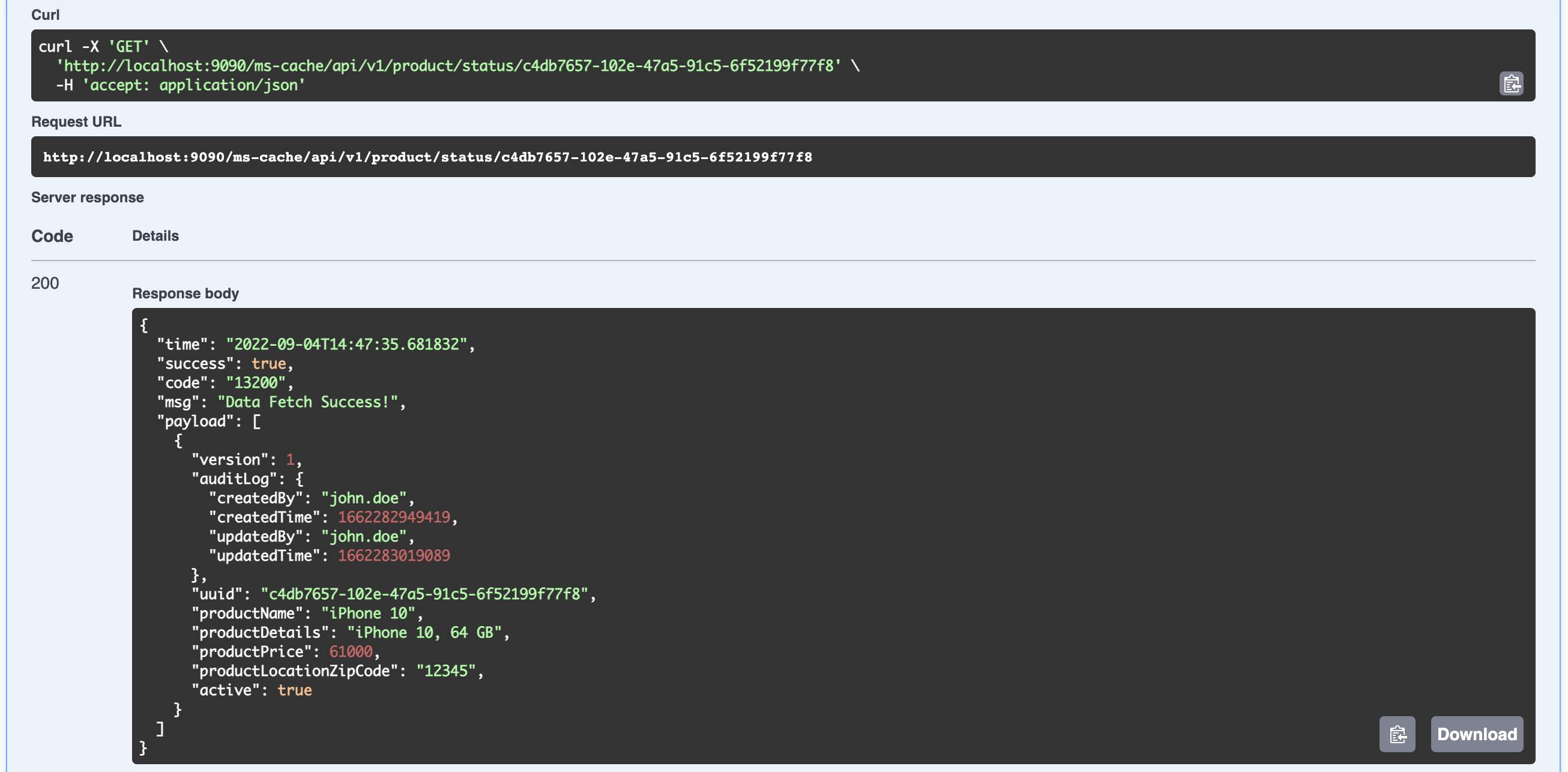
#### 2.1.8 PUT Update the Product Price
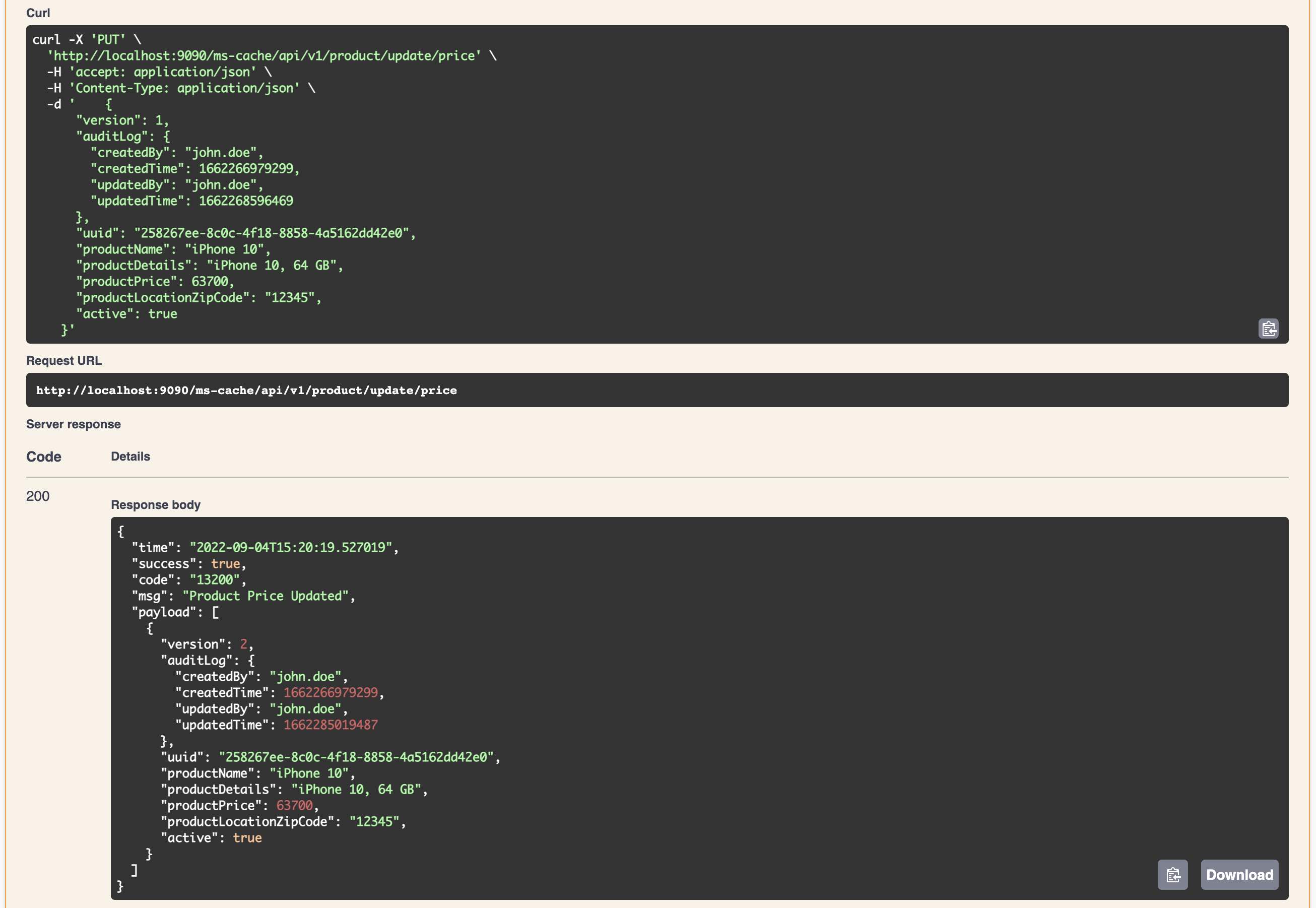
#### 2.1.9 PUT Update the Product - DeActivate the Product > Set isActive Flag = False
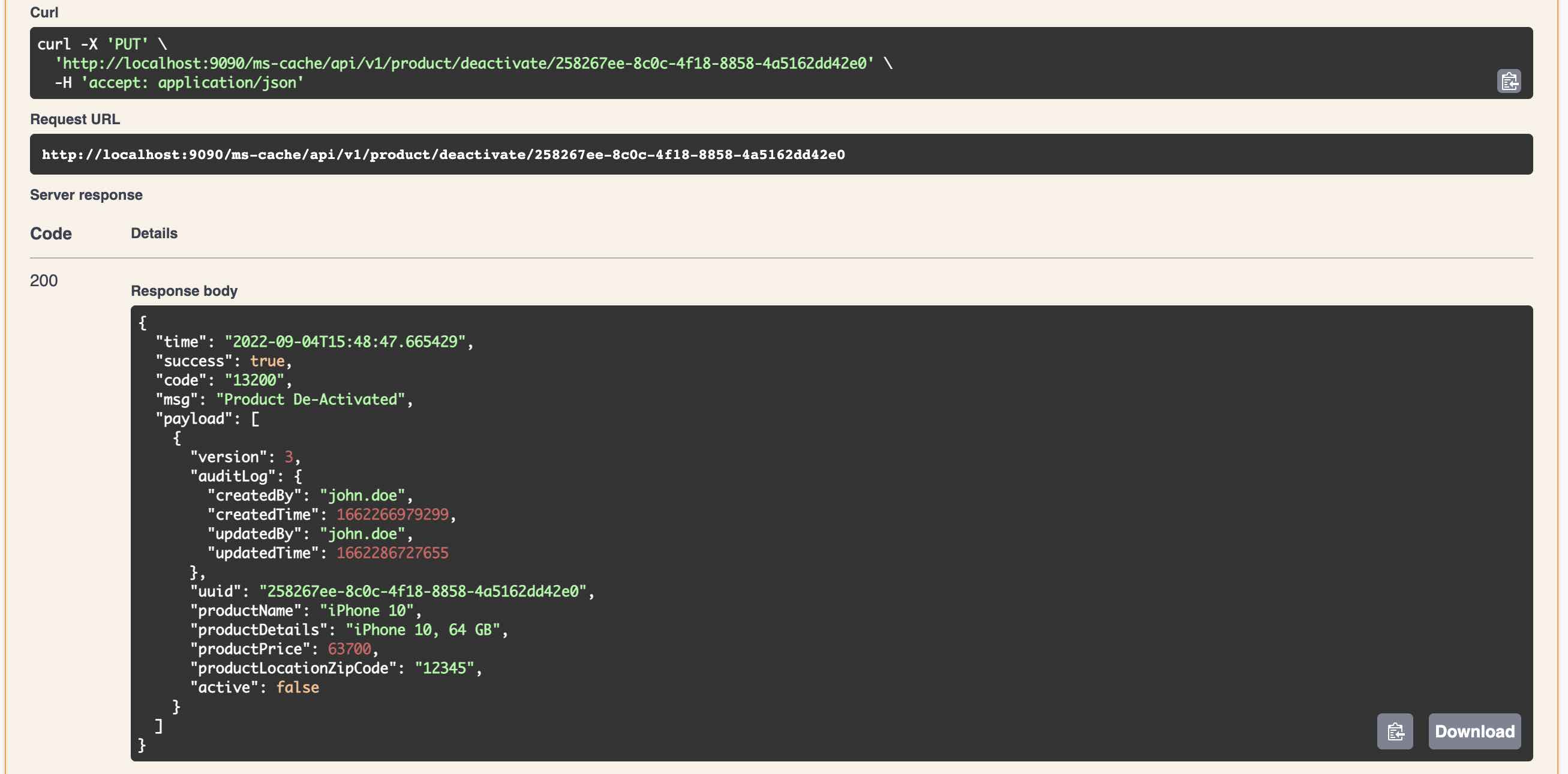
#### 2.1.10 State of the Records after Inserts and Updates

### 2.2 Error Handling
#### 2.2.1 Error Handling - Invalid Input
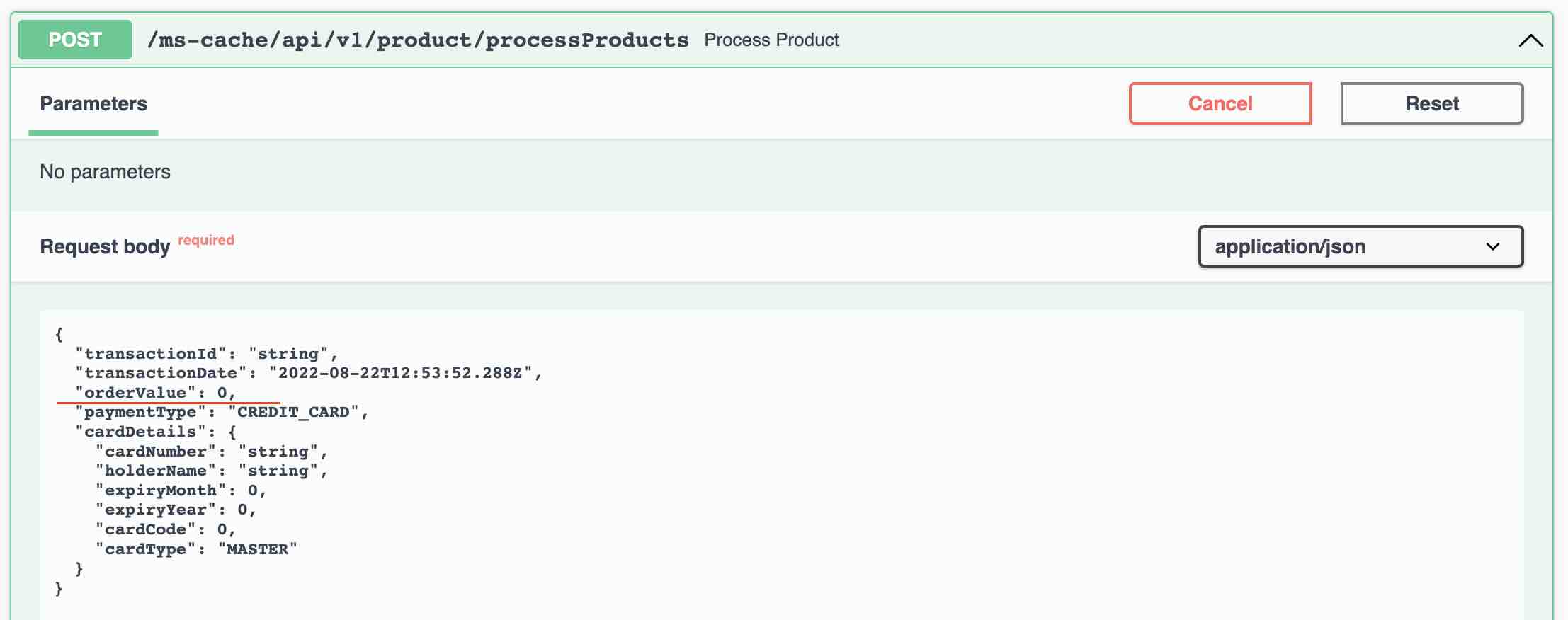
#### 2.2.2 Error Handling - Invalid Input - Result
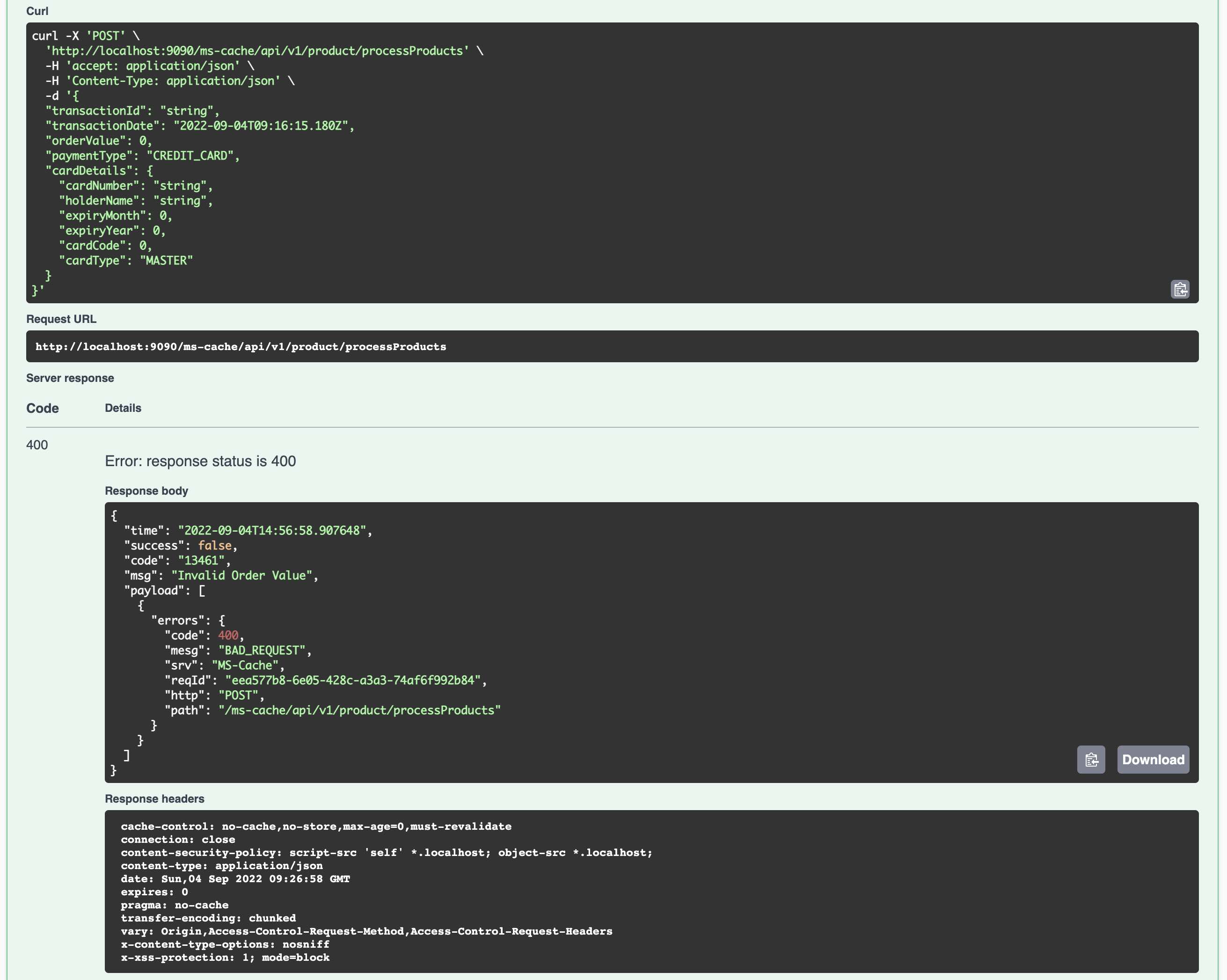
#### 2.2.3 Error Handling - Invalid Input - Field Validations

#### 2.2.4 Error Handling - Invalid Input - Field Validations - Result
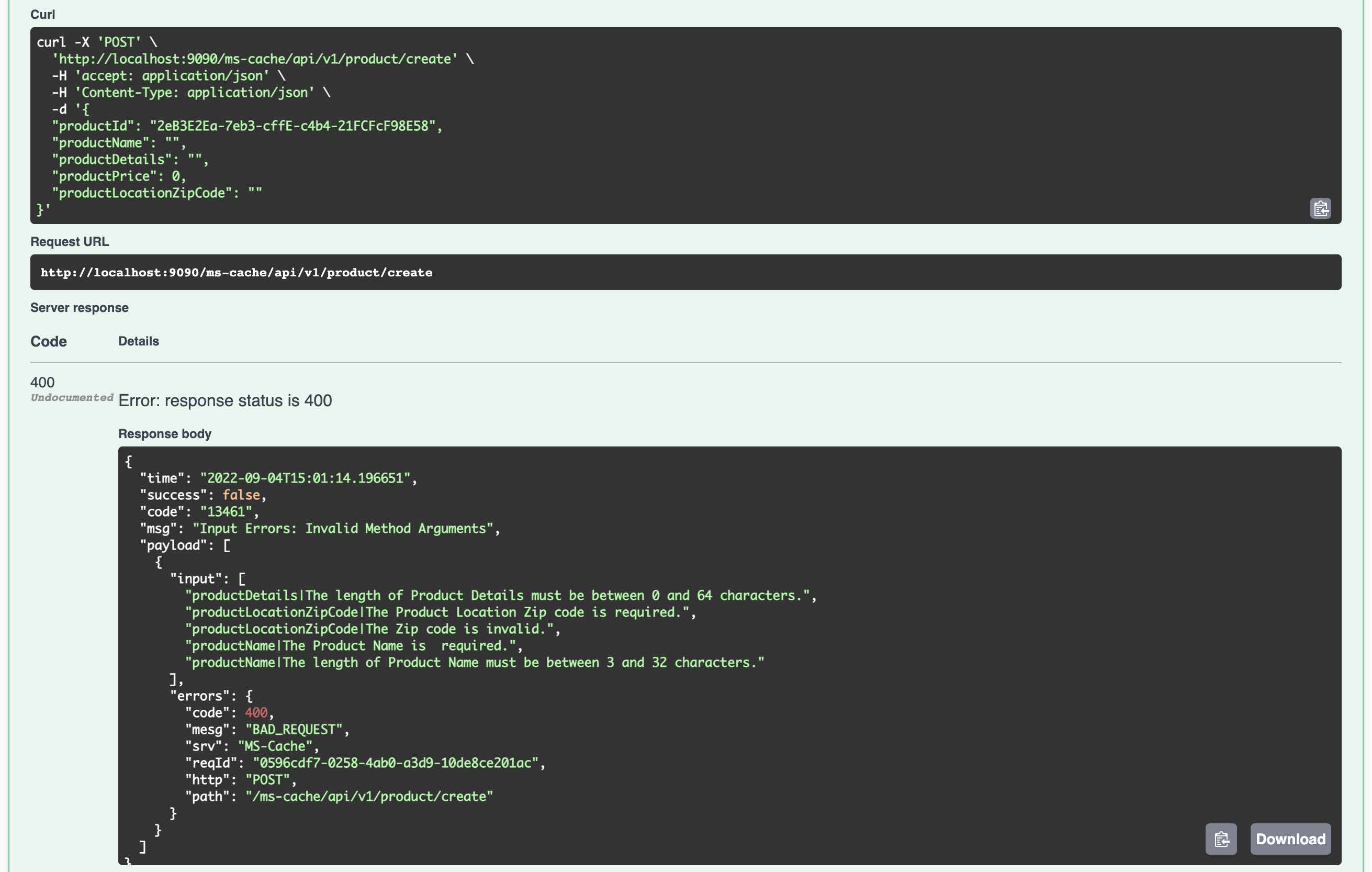
#### 2.2.5 Error Handling - Version Mismatch based o JPA @Version Annotation
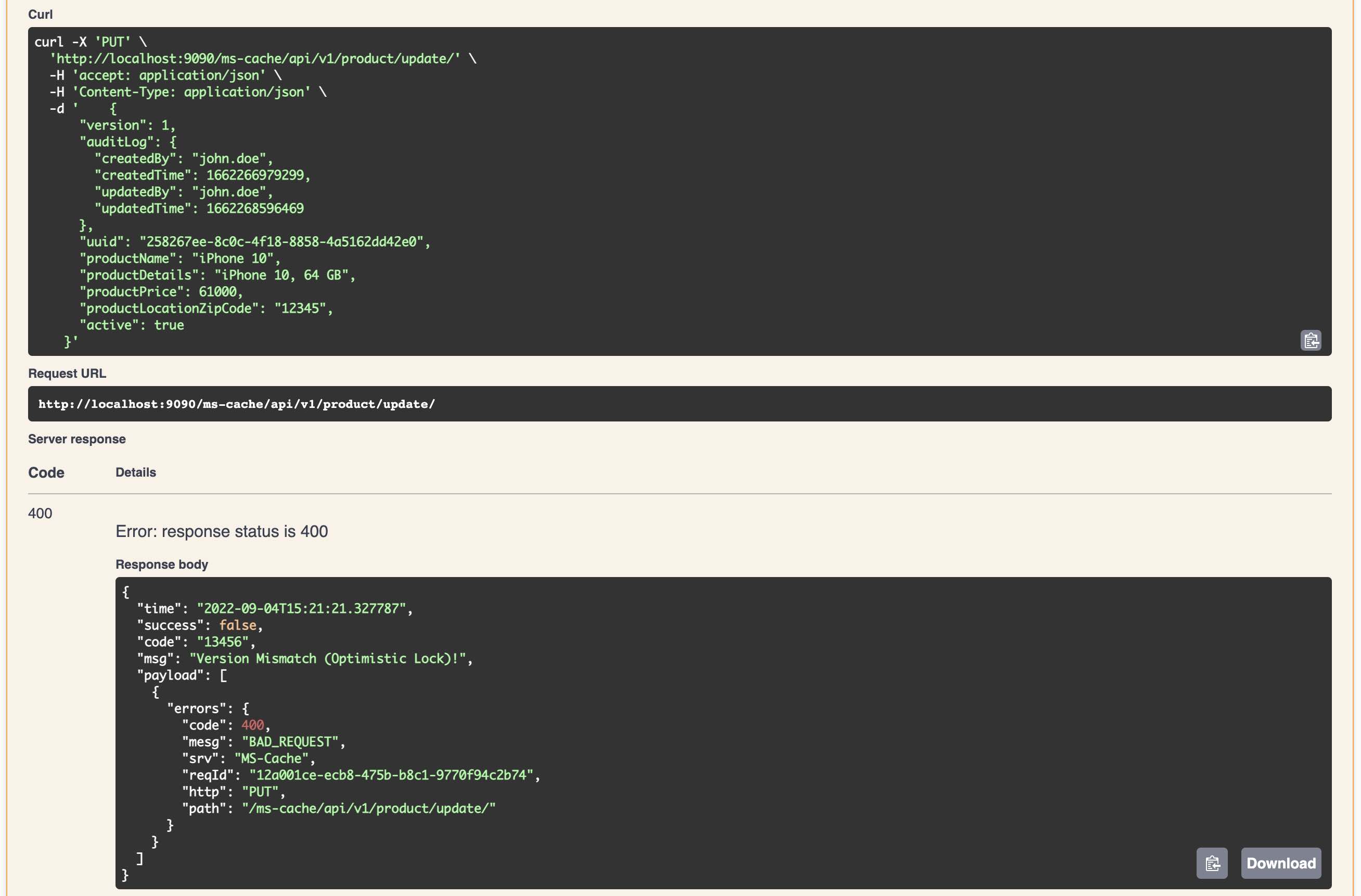
### 2.3 Log Management
#### 2.3.1 Log Success Messages

#### 2.3.2 Log Failure Messages

## 3. Configure the Template: Setup Org, Service, & Container Name, Versions, API Path in app.props.tmpl
1. git clone https://github.com/arafkarsh/ms-quickstart.git
2. cd ms-quickstart
Update the Properties Template
1. Update the Org Name in src/main/resources/app.props.tmpl file (service.org)
2. Update the Microservice name in src/main/resources/app.props.tmpl file (service.name)
3. Update the API Version in src/main/resources/app.props.tmpl file (service.api.version)
4. Update the API Name in src/main/resources/app.props.tmpl file (service.api.name)
5. Update the Container Name in src/main/resources/app.props.tmpl file (service.container)
6. Update the Server Version src/main/resources/app.props.tmpl file (server.version)
Pom File
0.4.0
app.props.tmpl
Microservice Server Properties
server.version=0.4.0
Sample Property File Template
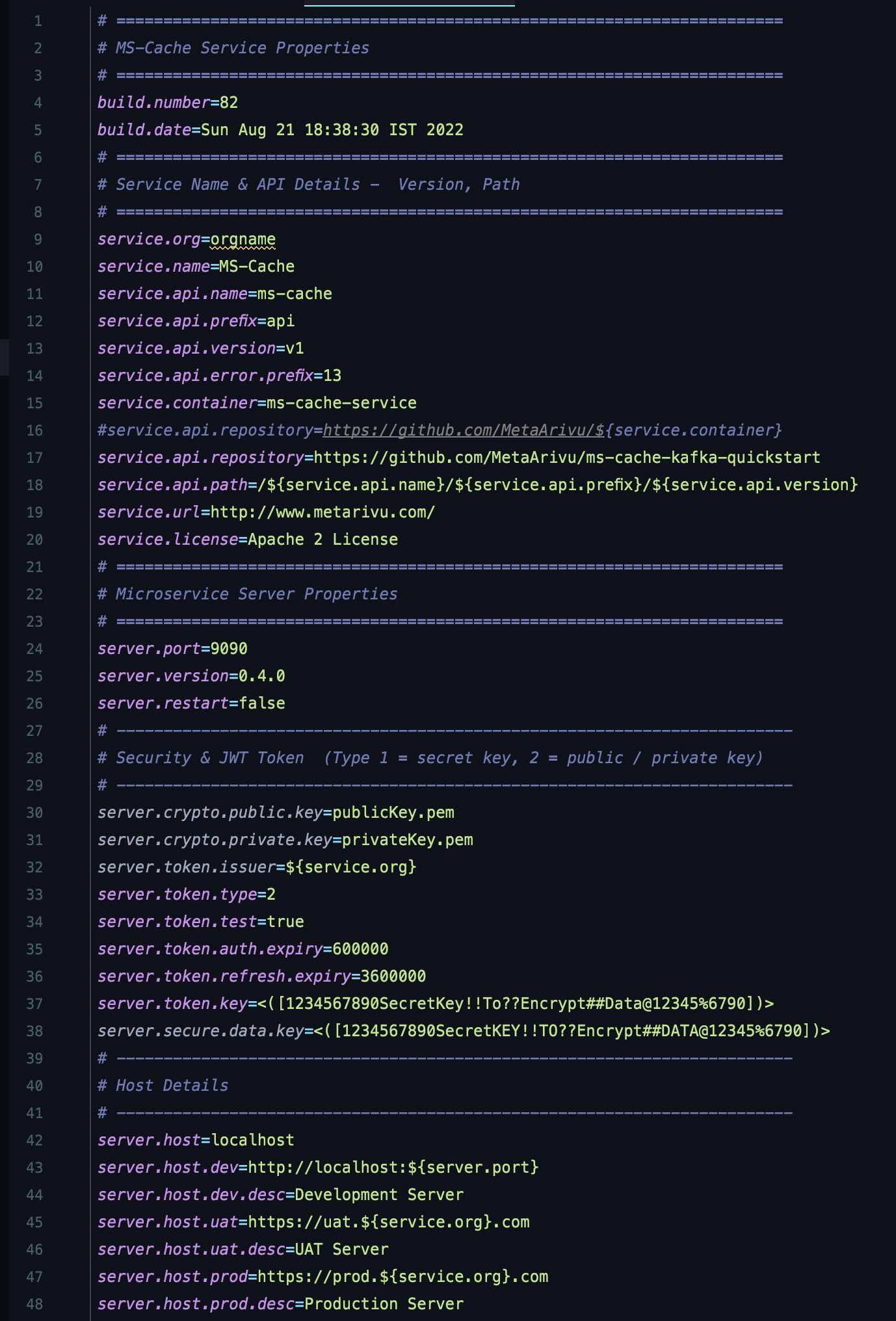
When you change the version in POM.xml, update that info in src/main/resources/app.props.tmpl - server.version property also.
## 4. Docker Container Setup
### Step 4.1 - Verify Container Name and Org Name
1. Verify the Org Name in src/main/resources/app.props.tmpl file (service.org)
2. Verify the container name in src/main/resources/app.props.tmpl file (service.container)
3. Verify the microservice name in src/main/resources/app.props.tmpl file (service.api.name)
### Step 4.2 - Build the image
1. build (Build the Container)
2. scan (Scan the container vulnerabilities)
### Step 4.3 - Test the image
1. start (Start the Container)
2. logs (to view the container logs) - Wait for the Container to Startup
3. Check the URL in a Browser
### Step 4.4 - Push the image to Container Cloud Repository
Update the Org Name in src/main/resources/app.props.tmpl file (service.org)
Setup the Docker Hub or any other Container Registry
1. push (Push the Container to Docker Hub)
### Step 4.5 Other Commands
1. stop (Stop the Container)
2. stats (show container stats)
(C) Copyright 2022 : Apache 2 License : Author: Araf Karsh Hamid